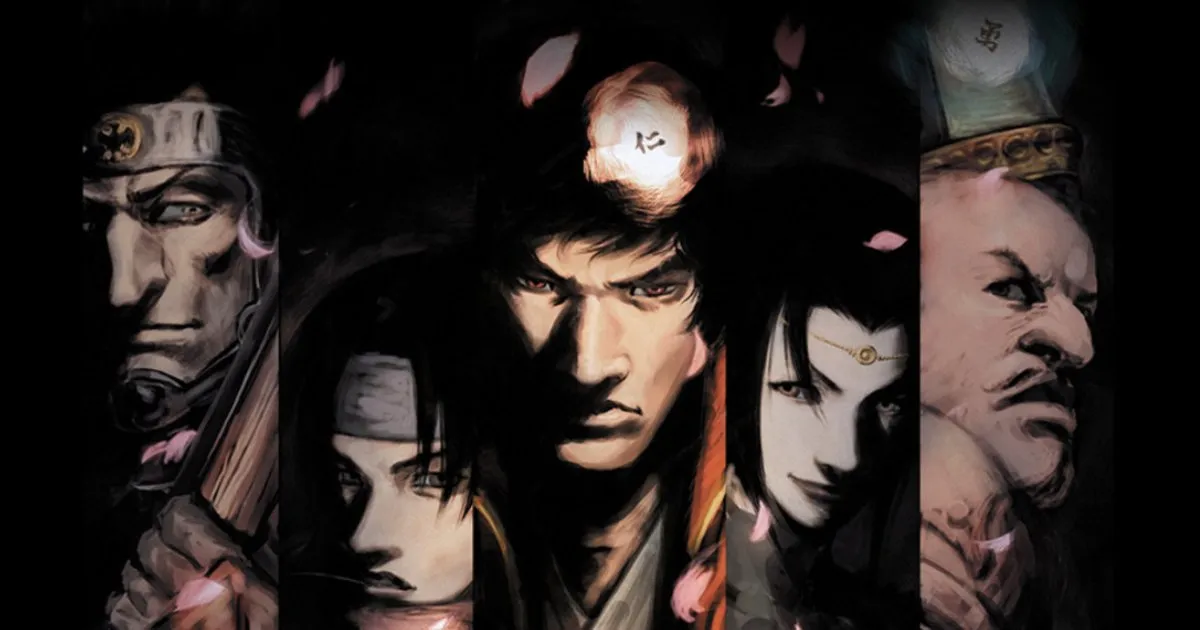As I said back in my preview piece, I am a relic who enjoys Resident Evil and its older derivations. Onimusha 2 is definitely one of those, and I mean that with outright praise. Coming of an era with that, Devil May Cry, Extermination, Dino Crisis… there was a veritable flood.
What makes Onimusha special was that it retained that trademark Capcom style, whilst being exciting as a new “brand” for the publisher. So, naturally, sequels were lined up, and then some twenty years later, resurrected with a fresh coat of demon-slaying style and spackle.
Which begs the question, then; does Onimusha 2: Samurai’s Destiny follow nicely on from Warlords’ 2018 port, or is going to taint the taste for the upcoming revival in Onimusha: Way of the Sword next year? Let’s find out…
Disclaimer: it turns out that if you select the already unlocked bonus costumes and then save, you can’t change them back on a whim. But on the plus side, at least you know the captures in here are authentically mine.
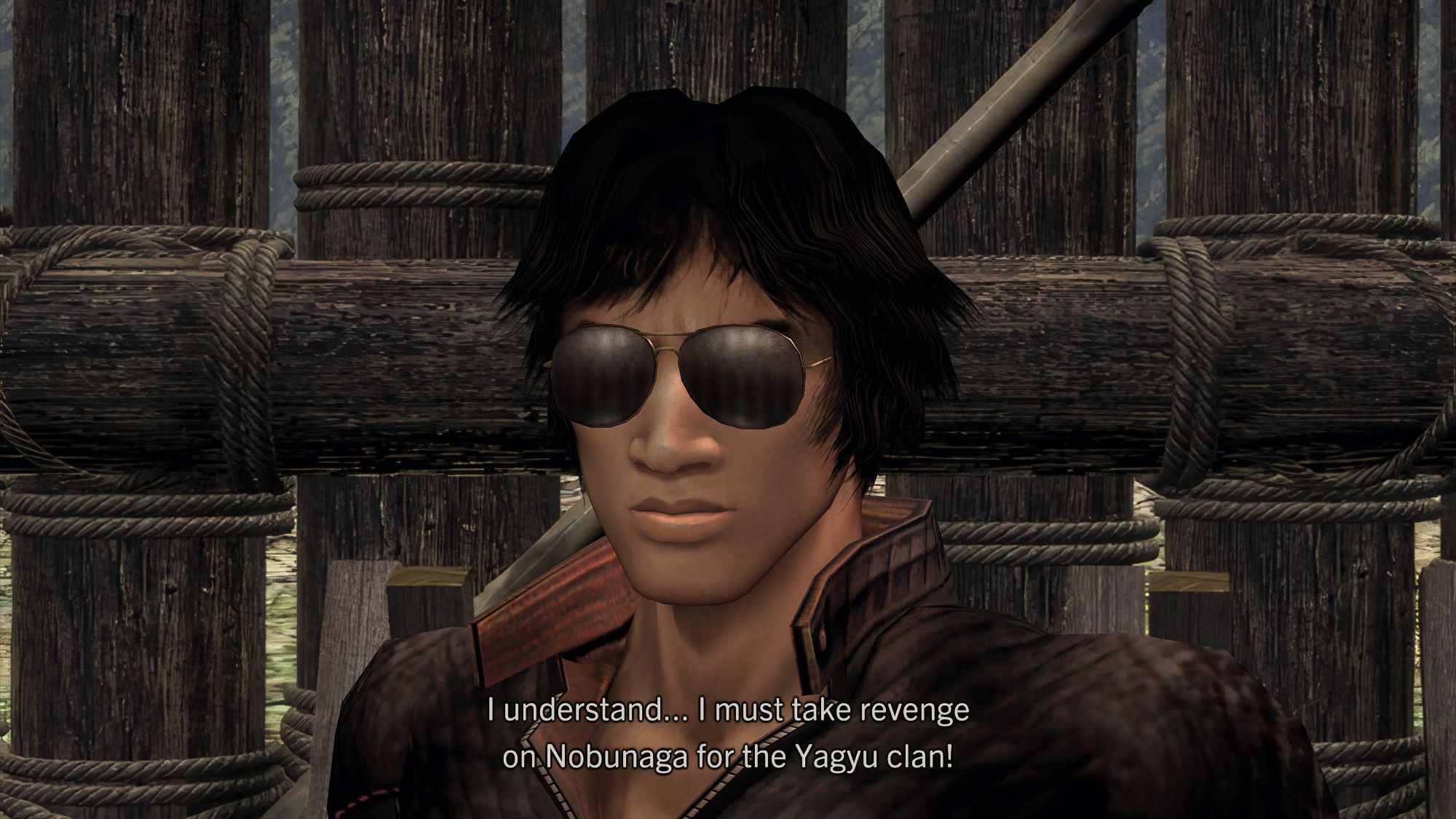
They Call It “Feudal” For A Reason…
So, now that I can talk about the plot unlike before, it’s actually pretty straightforward. After the events of the first Onimusha, it was left ambiguous as to the fate of resurrected warlord, Nobunaga Oda. As we soon find out, he survived the assumed death in a collapsing castle, and is back to the wreak havoc on the neighbouring villages in a bid for domination. Having taken control of the Genma, the demons in the Onimusha universe, Nobunaga stops at nothing to raze towns and villages to dust.
One such village in his crosshairs is that of the Yagyu clan, home to the popular-in-modern-lore Jubei Yagyu. That’s right: instead of the established protagonist in Takeshi Kaneshiro’s Samanosuke, players this time fill the kegetsu of Jubei on his quest for revenge. Samanosuke (as we learn in the next game) is off fighting the Genma on a larger scale, so we’re instead following the more famously known samurai as he takes on Oda and his demon crew.
As I say, it’s a classic revenge story, interwoven with elements of more famously known Japanese figures. And in peak 2000’s era Capcom, it features some of the most wooden and woeful voice acting and hand-gesturing in gaming. But then, if you’re old and you cut your teeth on that kind of corn, you’re in your element here.
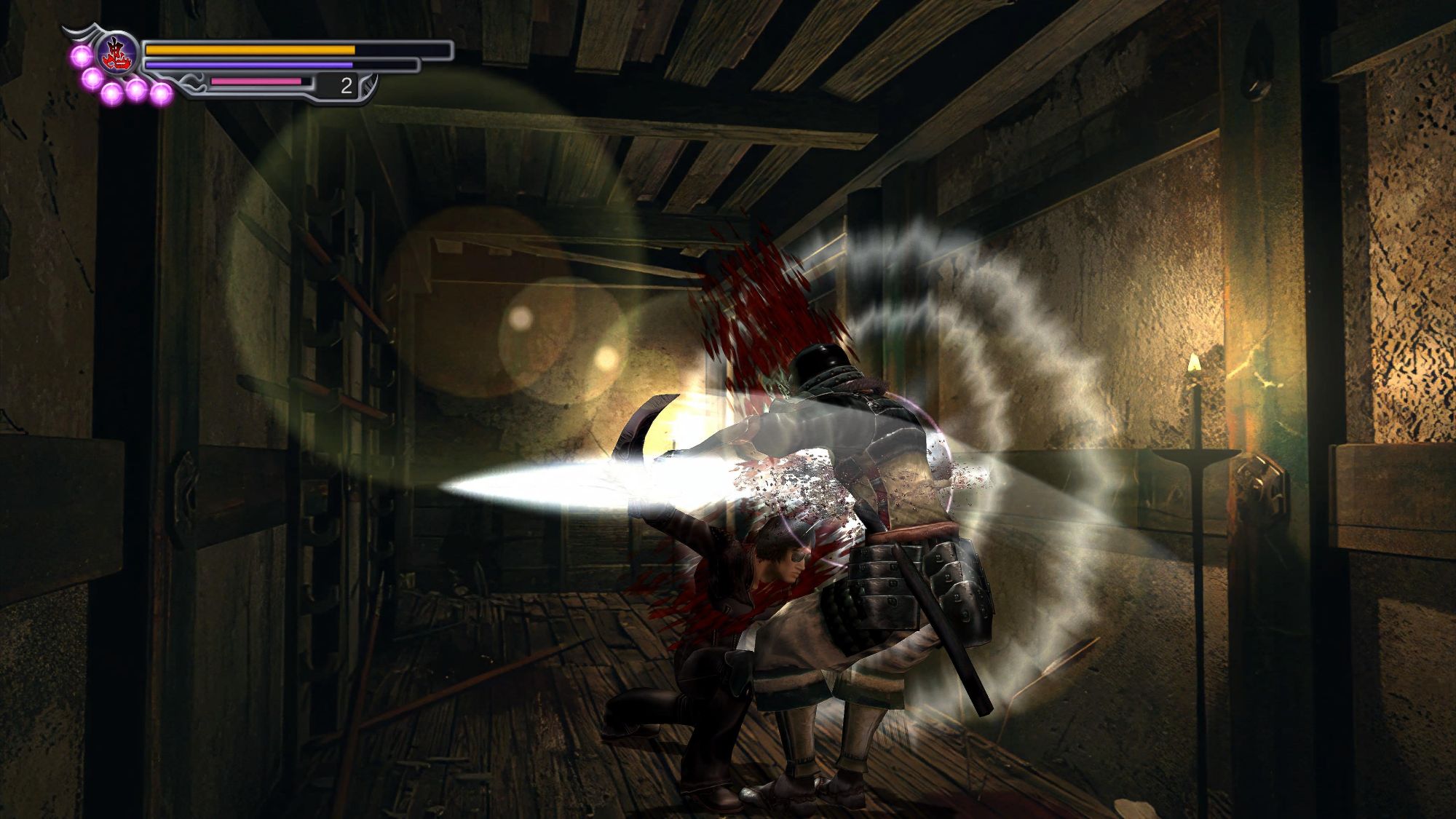
We Still Kill The Old Way
Now, I’ve used the “if you remember this” referencing already (and will probably do it again later), but I am aware that this series may be new to some. So in that regard, those might be wondering how Onimusha 2 plays. Well, like a game that uses a style made popular by survival-horror at the time, funnily enough. What that means is fixed camera angles, lots of door transitions and key-and-lock puzzles that are way too elaborate for common sense.
To get more specific, Jubei’s travels take him from villages, mines and such to demon-tainted corridors and castles down the line. That’s not a spoiler, Japan was rife with castles and lords back in the day. Anyway, our hero’s quest sees him battle his way through said locales, hacking and slashing his way through Genma hordes. The difference here is that demons are not as bound to one plane of existence as. say, dinosaurs or zombies. So expect to clear a room out, leave, come back and find more demons. Or sometimes don’t even leave, just stand there and grind out some more souls (more on that later).
To use the most obvious analogy, it plays like a Resident Evil game. That is to say, it has tank controls: the old system of “you’ll walk forward by pressing up, regardless of camera orientation”. Fortunately, for all you modern moaners, this is optional, relegated to the directional pad. Full 3D movement has the thumbstick priority here, although it can be disorienting when screens change and the 3D movements bugger up a bit.
Combat is pretty standard, too. But standard isn’t bad, and can actually be engaging when it works. Jubei can find and equip several types of weapon along the way, which one you get on with is entirely preference. What Onimusha 2 did incorporate, besides the standard blocking system, is a parry-and-counter system for more engaging combat. It’s a bit fiddly to pull off at times, but it’s satisfying when it works.
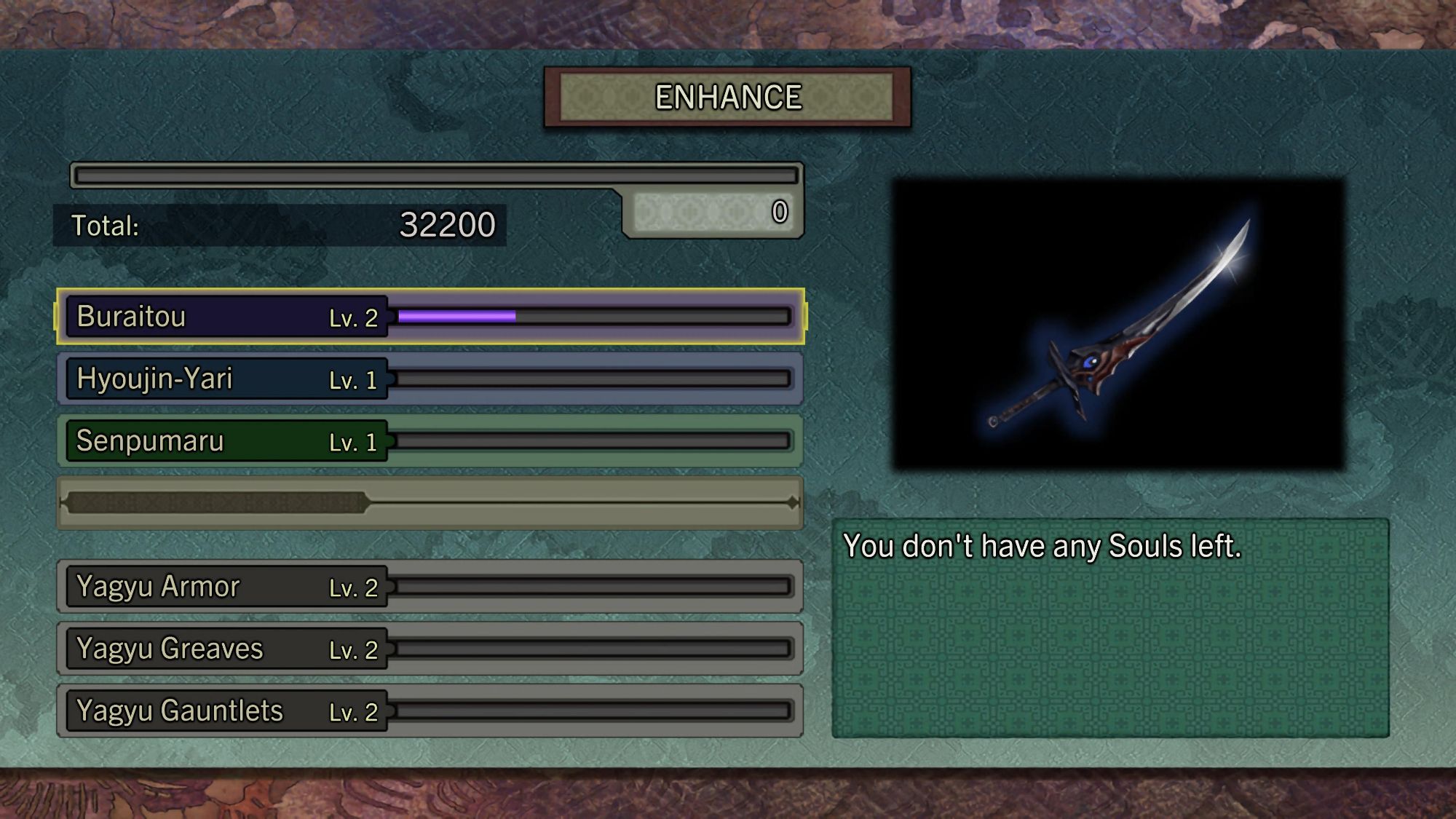
Souls-Hike Pricing
What sets Onimusha 2 apart from the survival-horror template to a more action-adventure title is the reliance on combat and grind. That’s right, before all of yours Souls’ and such popularised it, Capcom were doing it near-twenty five years ago. And by golly, it can be just as boring then as it is now. As mentioned previously, demons have souls. These souls are the game’s currency, gathered up by Jubei’s magic hoover-hand upon death.
As the rather lacklustre chart above shows, Jubei’s weapons have a certain level to them. Three being the max, each level changes the appearance, stats, and magically attack of selected weapon. We don’t actually get to see these stats, but c’mon, Capcom wouldn’t give us placebos now… would they? The magic attack that each weapon uses is unique, too. The Buraitou is a lightning-affinite sword, so its special is a shockingly strong combo attack.
The Senpumaru is a double-edged pole-type weapon, with a wind-based affinity. Its special is an area-of-effect defensive tornado, which when upgraded will also knock back enemies. I won’t spoil the rest, but you get the gist. To again make modern references, there’s no secret tricks with any of these, or any that cater to a specific “build”, as it were. It really boils down to what you, the player, are comfortable with. Personally, I favour the Buraitou and Senpumaru.
“So where’s the grind?”, you might be wondering. Well, the upgrade system is not cheap… at all. That’s no exaggeration, mind. You really will be backtracking and slaying groups en masse if you want to max out your weapons and armour. Of course, you don’t have to (and there’s a trophy/achievement for going bare-bones), but it will make the game harder.
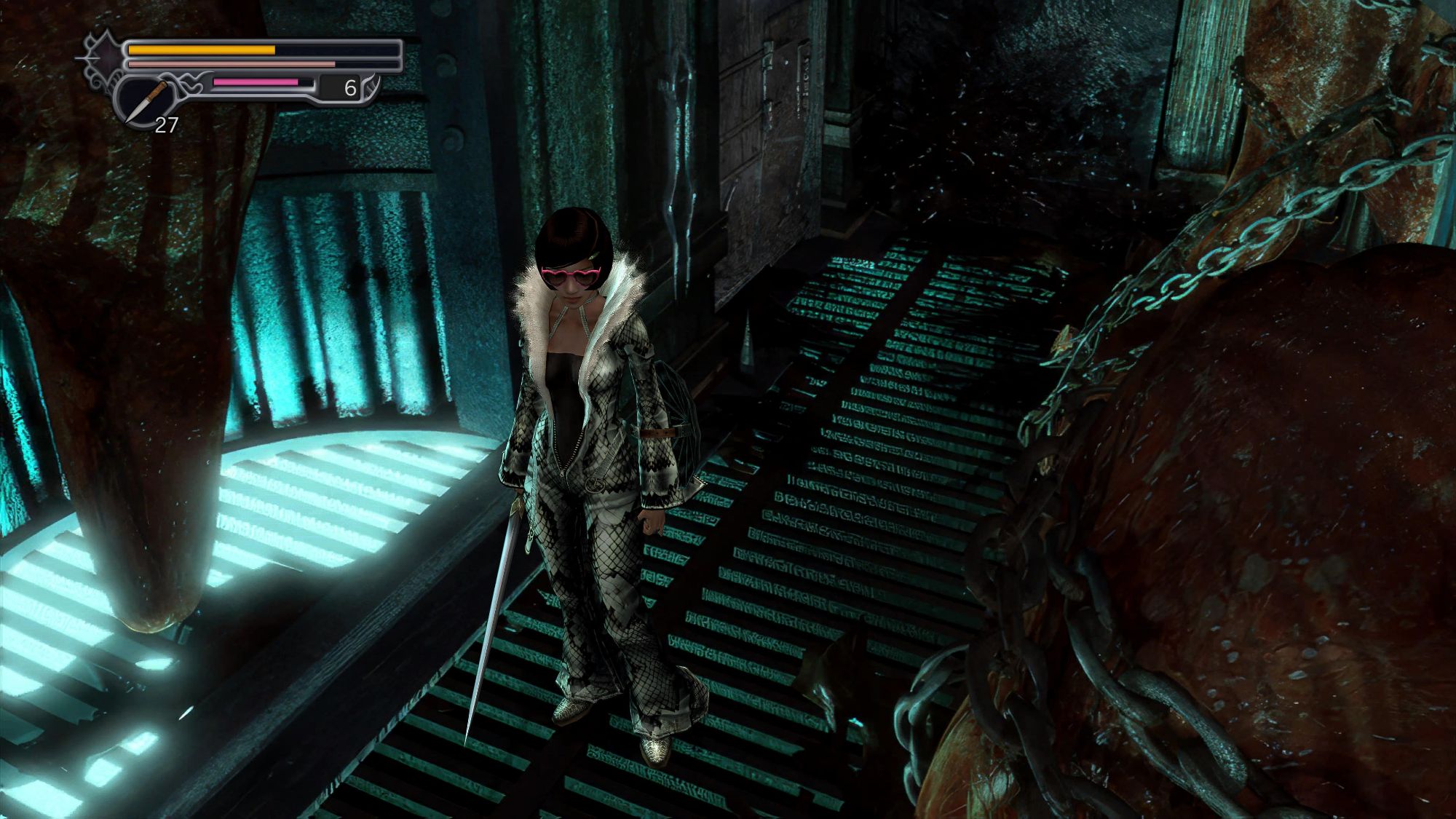
Oh You
I won’t go much more in-depth to the game on the whole, as it has been out for quite some time now (the original, I mean). But I would just like to elaborate on a system that will, most likely, pass by a lot of players. See, this is the inherent problem with older titles: there’s an absolute treaure trove of hidden features in some titles, that without any hand-holding could be entirely missed.
There’s one in Onimusha 2, too. It’s not uncommon to occasionally switch to other characters at certain story points, much like in Resident Evil 2 (off the top of my head). Sure enough, there’s a portion of the game spent as Oyu, with her own back and forth section of action. But that’s not all the game has to offer.
There is a gift system, one that can be utilised for item gain and support. Along the way, Jubei will pick up seemingly random and unhelpful items, like flutes and kaleidoscopes. But whilst useless to the grumpy man himself, they can be given to the supporting characters Ekei, Kotaro and Magoichi (I haven’t really divulged into this lot because some things should be a surprise). If they like a gift, they’ll reward Jubei with an item, from consumable medicine to life/magic-enhacing jewels.
Butter them up futher and it doesn’t stop at gift-giving. They’ll even pop up along the way to aid Jubei at certain points, including but not limited to, boss fights. It’s a neat little mechanic, but it’s also a pain in the ass. The support crew will drop hints at what they like, but they are vague at best. Do you want to know if they’re going to help you or not? Well, so would I.
Yes, there are plenty of guides written about in the last twenty years but if you didn’t know it was there, or how deep it went, it can go entirely missed. That’s the classics for you.

We’re All Getting On A Bit Now…
So, what is actually new in Onimusha 2, that really makes it stand out from its original version? Well, besides new aspect ratios, adaptable controls and a few quality of life tweaks… not a lot. Oh sure, it looks nice, and I don’t mean to sound too blase about it, but c’mon: remasters have to at least look nice or they’re just terrible ports, really. The voice acting is still straight GCSE drama level, as previously mentioned.
In terms of gameplay, Jubei can now switch between weapons on the fly. Both melee and ranged weapons can be cycled through, which is a little bit fiddly at first but functional. It is done in real-time, however, so be mindful. Of course, players can pause and manually equip if they need a reprieve, so it’s nice to have both options. Maps are also hotkey mapped, which is a nice little tweak without having to scroll menus to find out which one you’re in.
But one of the biggest and most welcoming changes is the titular Onimusha transformations. In the original (that is, the first Onimusha), Samanosuke could transform into his more power Oni form at a player’s whim. You know, the sort of hail Mary, get-out-of-a-bind moments… or boss fights. Whereas in the original Onimusha 2, the game would go “Ooh, spicy moment!” and transform Jubei at random (provided he had the requisite five purple orbs collected).
Which, as you can imagine, is pretty damn annoying if you’ve just cleared a room and it triggers it. Fortunately, Capcom saw sense this time around and have once more put it back in the hands of the player. Also, and maybe it’s just me, but the volume of purple orbs is far more plentiful. Anyway, you know what they say about gift horses and the mouths thereof.

Destined, As It Were
In conclusion, because how much can you really wax lyrical about a remaster, is Onimusha 2: Samurai’s Destiny up to scratch? Is it worth the entty price, or re-entry price if you’re an old hat like me? Well, that entirely depends on how much you love a retro hack and slash, I suppose. Personally, I do, as I’ve gone on record in the past saying that this era of gaming is my proverbial jam.
In regards to value, there’s a fair few trophies/achievements that encourage the grind, or lack of, as well as collectible hunting. There’s the usual smorgasbord of galleries, featuring artworks from development to release. In terms of gameplay, the remaster thankfully comes with a few extra modes from the start. I won’t give away what they are, but they’re separate from the main game and add their own rewards and change things up a little bit. I mentioned in the preview about the new Hell mode, akin to a Dante Must Die mode in Devil May Cry. This unlockable, one-hit death mode is strictly for the hardcore, and we all know there are some of those out there.
To wrap up, then, Onimusha 2: Samurai’s Destiny Remaster is worth it, with a but. The “but” being that like any remaster, it’s more for the fans that it is the newcomers. For the latter, the first game’s remaster is readily available and likely to be cheaper, for somewhere to start. If you have done that one, then by all means leap into this one because, as a whole, Onimusha is a great series.
If it gets people invested, and garners more support for the upcoming new one, then I am all for it. It just makes me more hopeful that the third one will get the same treatment, and that one’s a cracking game.
Onimusha 2: Samurai’s Destiny Remaster is available now on PlayStation 4 (reviewed on PS5 Pro), Xbox One, Nintendo Switch and PC via Steam.
Developer: Capcom
Publisher: Capcom
Disclaimer: In order to complete this review, we were provided with a promotional copy of the game. For our full review policy, please go here.
If you enjoyed this article or any more of our content, please consider our Patreon.
Make sure to follow Finger Guns on our social channels. Twitter, Facebook, Twitch, Spotify or Apple Podcasts – to keep up to date on our news, reviews and features.
